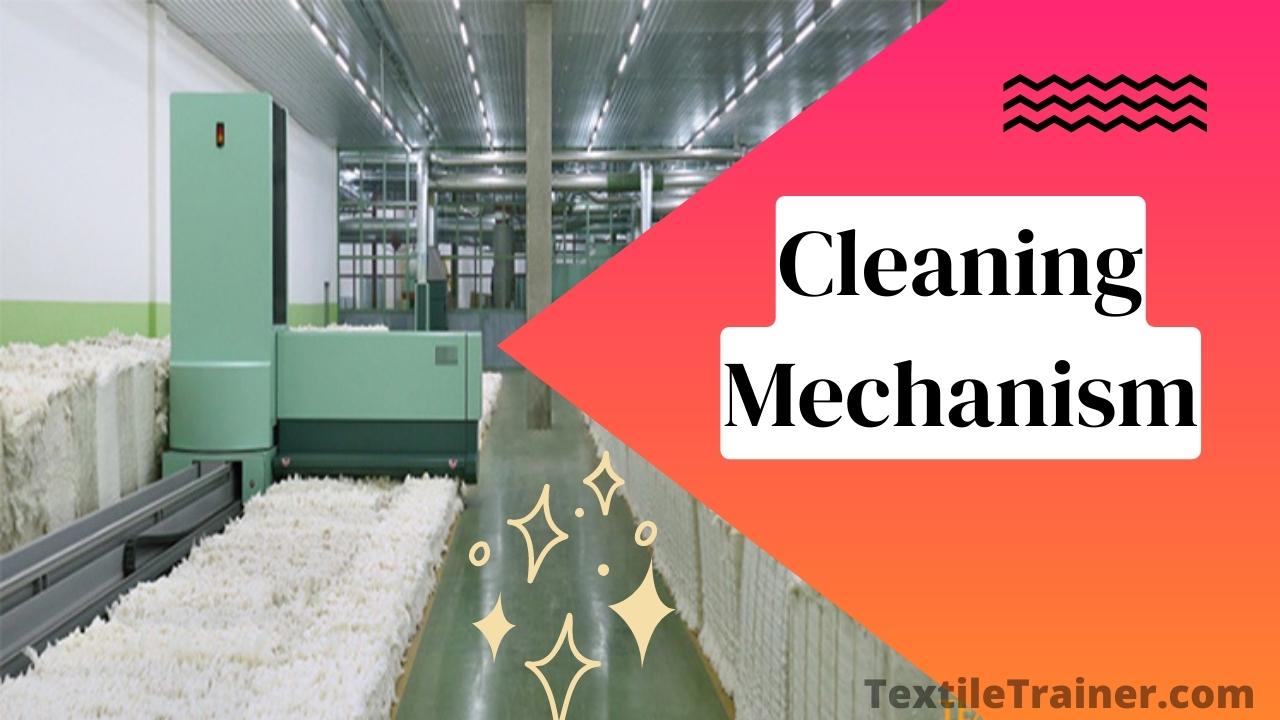Introduction:
To maximize efficiency and ensure high-quality output, it is crucial to understand the fundamental principles of cleaning mechanisms and achieve the optimal degree of cleaning. In this comprehensive guide, we will delve into the intricacies of the cleaning process within the blow room, exploring the principles that govern its functionality. The various mechanisms used to remove dust, dirt, and foreign particles from cotton fiber will be explained. Our discussion will range from the initial stages of opening and cleaning to subsequent processes like carding and combing, highlighting how cleaning mechanisms contribute to cotton fiber cleanliness and quality. Additionally, we will explore the concept of cleaning degree, which quantifies the effectiveness of the cleaning process. In order to enhance productivity, minimize fiber losses, and produce high-quality cotton, it is essential to understand what contributes to achieving the optimal degree of cleaning.
Throughout this article, we will discuss the technical aspects of cleaning mechanisms, including using various components, such as beaters, cleaners, and air systems. They are also analyzed regarding their principles and factors that influence their effectiveness. Additionally, we will discuss the importance of monitoring and controlling the degree of cleaning through advanced technologies and measurement techniques. Operators can optimize production outcomes and achieve the desired level of cleanliness by implementing precise control mechanisms. Whether you are a seasoned professional looking to enhance your understanding of cleaning mechanisms or a newcomer to the field of cotton processing, this guide aims to provide you with comprehensive insights into the principle of cleaning mechanisms in the blow room as well as the vital aspect of achieving the optimal degree of cleaning. Let’s embark on a journey together to maximize efficiency, quality, and productivity in this fascinating world of cotton processing.

What is Cleaning?
A process of separating and removing impurities from fiber by breaking up their adhesion to it is called cleaning. Almost every natural fiber contains impurities, especially cotton fiber, which is harvested and ginned to hold more. The impurities adhere to the fibers’ inner and outer surfaces. Cleaning works by releasing the adhesion of impurities to fiber surfaces.
Classification of Cleaning:
There are several ways in which cleaning can be classified, as it depends on the mechanism that releases the adhesion of impurities to fibers:
- Chemical cleaning: When a chemical cleaning process is used, the subject is treated with a chemical agent, and impurities are removed by the chemical interaction between the chemical agent and impurities, such as bleaching and scouring.
- Wet cleaning: Wet cleaning is a process whereby the subject is poured into the wetting liquor, which releases the impurities from the subject by releasing their adhesion to the subject, such as saponification in wet cleaning.
- Mechanical cleaning: A mechanical cleaning is a method in which subjects are treated with mechanical mechanisms and impurities are removed through mechanical means, such as striking, beating, scraping, extracting, etc.
There is a mechanical cleaning process that is used in mechanical spinning mills, i.e. short staple spinning machines.
Principle of Cleaning Mechanism:
Natural fiber like cotton has the drawback of having impurities, such as trash, dirt, dust leaves, and foreign matter like sand, metal parts and colour contaminants. In addition to having different physical characteristics, these impurities also exhibit different mechanisms of cleaning, especially mechanical cleaning, which has a wide range of applications based on the object it is cleaned with. As a result, various impurities respond to different cleaning mechanisms differently. Depending on the type of impurities that we are dealing with, the appropriate cleaning mechanism must be selected in order to achieve the most significant level of cleaning efficiency. This principle of the cleaning mechanism is illustrated in the table below.
| Action of cleaning | Mechanism of cleaning | Description of mechanism | Category of impurities | Location of cleaning point |
| Striking | Falling out | By continuous collision of flocks | Trash | Blow room |
| Beating | Ejection | By sudden collision of flocks | Trash | Blow room |
| Scrapping | Separation | By continuous friction of flocks | Dust | BR, Roller Draft |
| Suction | Separation | By continuous air suction of flocks | Dust, Trash | BR, Roller Draft |
| Combing | Extraction | By continuous penetration of needles in clocks | Short fiber | Comber |
| Air-flow (Centrifugal force) | Falling out | By highly acceleration of flock | Trash | Carding, Rotor |
| Air-blow | Ejection | By highly acceleration of flock | Contaminant | Blow Room |
What is Degree of Cleaning?
In order to determine whether a beater is effective at cleaning, we refer to its degree of cleaning. “The intensity of cleaning, which is measured to assess the cleaning performance value of a beater, is called degree of cleaning.” The degree of cleaning is the extent to which impurities and foreign matter are removed from cotton fibers effectively. A cotton preparation process before spinning is vital to its success. In the blow room, impurities and foreign matter are typically measured as a percentage of the cotton that has been cleaned.
Factor for Degree of Cleaning:
- Trash content of feed material: the higher the trash content in the feed material the higher the degree of cleaning.
- size of trash and dirt of feed material: the higher the size of the trash in the feed material the higher the degree of cleaning.
- setting of cleaning device: if grid bar setting is wider, the higher the degree of cleaning.
- parameter of cleaning device: speed, type, density and arrangement-the higher the profile of speed, density and aggressiveness the higher the degree of cleaning.
- degree of opening of feed material: the higher the degree of opening of feed material the higher the degree of cleaning.
- position of trash and dirt in the feed material: the closer position of trash and dirt in the feed material to the inner side the lower the degree of cleaning.
- Sequence of machines: from coarse cleaner to fine cleaner sequence gives optimal degree of cleaning.
- condition of feed material to be cleaned: damped or dry-the higher the degree of dampness of feed material the lover the degree of cleaning.
- nature of feed material to be cleaned: sticky or not-sticky material gives lower performance in cleaning action.
- throughput rate of material; the higher the throughput rate of material the lower the degree of cleaning.
- type of pre-opening of the feed material: roller ginned or saw ginned-roller ginned processed feed material give higher degree of cleaning but saw ginned deliver lower degree of cleaning.
- amount of feed material: the higher the amount of feed material the lower the degree of cleaning.
- mechanism of cleaning: depending on mechanism of cleaning definitely degree of cleaning will vary.
- air suction pressure for cleaning: depending on continuity and intensity of air suction pressure for cleaning degree of cleaning will vary.
Conclusion:
The Definitive Guide to the Principle of Cleaning Mechanism in Blow Room and Degree of Cleaning provides a comprehensive understanding of the cleaning process in the blow room and the importance of achieving an optimal degree of cleanliness in textile manufacturing. As well as exploring various cleaning mechanisms and their principles, this guide emphasizes the importance of efficient cleaning in ensuring high-quality yarn production. I would be glad to answer any questions you may have regarding this article if you would like.
References:
- Chowdhury, M. F. (2016). Manual of Short Staple Spinning. Dhaka: Granthanir Prokashoni.
- Corbman, D. P. (1983). Textiles Fiber to Fabric. NewYork: Mary McGarry.
- Hossain, M. S. (2014). Introduction to Textile Engineering. Dhka: Books Fair Publications.
- Kadolph, S. J. (2006). Textiles. New Delhi: Dorling Kindersley India Pvt. Ltd.







2 thoughts on “The Definitive Guide to the Principle of Cleaning Mechanism in Blow Room and Degree of Cleaning”